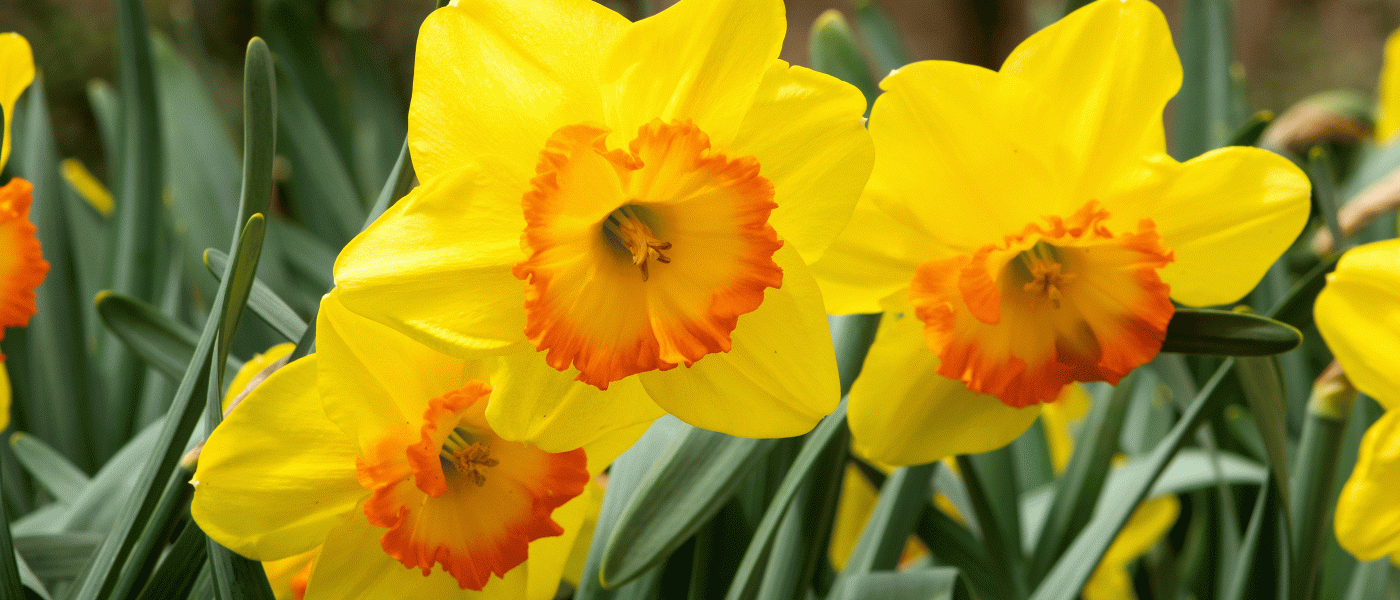Bloom Alert: Daffodil Divisions
Visitors can finally enjoy the lovely display of daffodils designed to showcase the variety of forms, colors, and even fragrances of the Narcissus genus.
The bulbs were actually planted way back in the fall of 2019 for the 2020 spring Annual Border display. This display is usually known for its wide variety of colorful tulips, but a tulip blight the previous year led curator Wayken Shaw to shift the focus to daffodils. Similarly, curator Jennifer Williams highlighted daffodils in the spring Fragrance Garden display. The pandemic meant that these bulbs bloomed in full glory while the Garden was closed to the public. The bright spot in that story was that the daffodils were cut and delivered to a local hospital as a thank-you gift to the staff.
Annual Border bulbs are usually dug up and donated to the community to make way for summer plantings, but last year’s were allowed to remain in place. Now they are in bloom again, along with other repeat-blooming specimens around the Garden. Daffodils from various divisions can also be seen in the Fragrance Garden, Shakespeare Garden, Perennial Border, Rock Garden, and of course Daffodil Hill, which has thousands, most of which are trumpet daffodils that have naturalized to nearly cover the hill.
The blooms in the Annual Border represent 11 of the 13 daffodil divisions established by the Royal Horticultural Society and include a range of bloom times. The classification system was first developed in 1908, at a time when daffodils were wildly popular and breeders were quickly developing many new cultivars. The system has been refined over the years, but cultivars are still classified by flower shape and size, color, and number per stem.
The Annual Border displays each division in a distinct plot, whereas the Fragrance Garden features mixed, naturalistic plantings of various divisions designed to bloom in succession. Be sure to see as many as you can this spring and enjoy the wonderful variety of forms and colors.
Division 1 — Trumpet Daffodils
The inner “cup,” or corona, of these single blooms is as long or longer then the surrounding tepals (the outer, petallike segments).
Division 2 — Large-Cupped Daffodils
These single blooms have coronas that are somewhere between one-third and the full length of the tepals.
Division 3 — Small-Cupped
These are also single blooms, but with coronas that are less than a third of the length of the tepals.
Division 4 — Double Daffodils
The tepals and/or corona of these flowers are doubled, and there may be one or two flowers per stem.
Division 5 — Triandrus
These have slightly reflexed tepals and two or more pendent (hanging) flowers per stem.
Division 6 — Cyclamineus
The single flowers of this division have significantly reflexed tepals that give them a distinctive “windswept” look.
Division 7 — Jonquilla
Daffodils of this division have one to five flowers per stem with tepals that are slightly reflexed or spreading and a flared or funnel-shaped cup.
Division 8 — Tazetta
These have multiple flowers per stem—as many as 20—and are usually fragrant.
Division 10 — Bulbocodium
These have a prominent corona with very small, insignificant tepals.
Division 11 — Split Corona
The corona is split rather than cup-shaped. Sometimes, in the case of collar daffodils, the corona segments are aligned with the tepals. Other times, as with papillon daffodils, the corona segments alternate with the tepals.
Division 13 — Daffodils Distinguished Solely by Botanical Name
This division includes species, wild variants, and wild hybrids found in natural daffodils and is further divided into sections. Narcissus poeticus is in the Narcissus section which includes daffodils with white petals and very shallow coronas which are often darker and red-rimmed.


